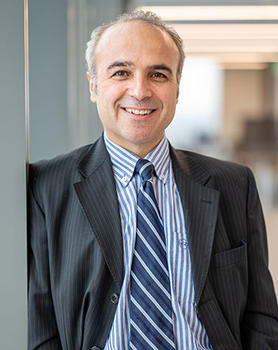The inverse relationship between charity care and trustee compensation highlights curious contradictions in the management practices of some of the biggest non-profit hospitals in the U.S.
More than half of U.S. hospitals are classified as “non-profit,” gaining federal, state and local tax exemptions in exchange for helping needy patients in their communities. But there’s an imbalance in the social contract that binds these hospitals. While the tax breaks are a dependably solid financial reward, hospitals are free to decide for themselves how much to spend on charity care and other community investments.

Perhaps due to their very loose community mandate, some non-profit hospitals seem to function in ways we wouldn’t expect from state-supported institutions, suggests Sebahattin Demirkan, associate professor of accounting at George Mason University School of Business. His recent article in the health care policy journal Health Affairs (co-written by Ge Bai, Hossein Zare and Gerard F. Anderson of Johns Hopkins University) reveals a vast disparity in organizational priorities within the sector.
The researchers analyzed mandatory IRS filings for more than 2,000 U.S. non-profit hospitals. They found that between 2011 and 2019, charity care declined, as a portion of total expenditure, by 21 percent across the sector. But one sub-group of hospitals made even deeper-than-average cuts: those that paid a salary to their trustees. In the nine years covered by the study, this sub-group cut charity care by nearly a full percentage point, from 2.5 to 1.6 percent (a decline of approximately 36 percent). A troubling pattern emerged from the data: The more money hospitals paid their trustees, the less they were likely to spend on care for needy patients (charity care).
“A $10,000 increase in average trustee compensation was associated with a 0.02-percentage-point reduction in charity care…[amounting to] $66,000-$77,000 for an average hospital,” the article states.
On the whole, trustee salaries appear moderate–by 2019, the average mean value of trustee compensation stood at $50,196. Still, this figure rose by 57 percent over the nine-year observation period–as charity care was being slashed quite drastically. But Demirkan says that the problem runs yet deeper. “If you look at the top 10 hospital groups, there are trustees making $600,000 or $700,000; there are some that are making big amounts of money,” he says. “If we focus on those, the inverse relationship between trustee compensation and charity care becomes even stronger.”
What’s going on here? Are these hospitals acting as honeypots for greedy trustees to dip into, at the expense of sick and poor patients? Not necessarily, says Demirkan. Instead, it may be related to how trustees view their fiduciary duties to institutional stakeholders. It’s reasonable to assume that trustees who command a considerable salary for their services may bring a conception of fiduciary duty familiar from the corporate world.
"By reducing charity care, they’re taking an easy path, rather than looking at significant areas within the operation of the hospital, such as lab costs, medical supply waste, etc."
“These folks are more about efficiency,” Demirkan surmises. “They are operating based on profit…By reducing charity care, they’re taking an easy path, rather than looking at significant areas within the operation of the hospital, such as lab costs, medical supply waste, etc.”
Trustees may expect a financial reward for making these indiscriminate cuts, as that is often how incentives are structured in the business world. The mission of non-profits, however, would dictate that “if you’re making money, you want to give back to society,” as Demirkan terms it. For its part, the IRS officially tasks trustees at non-profits to guard against the skimming of resources by organizational insiders. In this sense, the priorities at trustee-compensating non-profit hospitals appear to directly contradict federal government guidelines.
If charity care and trustee compensation continue to diverge, there could be severe consequences for communities as well as non-profit hospitals themselves. “If you cut charity care, what happens to society’s health?” Demirkan says. “People may die if they don’t get the care they need timely with the quality they deserve.”
In addition, at-risk, uninsured patients are often the canary in the coalmine when it comes to public health threats. By turning them away, hospitals could inadvertently deprive themselves of valuable leading-edge research opportunities. “Charity care provides an intangible benefit that you don’t realize in the first place,” Demirkan instructs.
While Demarkan’s research as yet draws no definitive causal connections, it highlights corporate governance as a possibly fertile area for policy intervention. “The Covid vaccine is a good example,” Demirkan says. “They said it would take three or four years, but it happened much quicker. It’s a matter of mindset. And it comes from the top to prioritize and collaborate with companies and government institutions.
“Also, non-profit partners, including insurance companies, may be impacting non-profit hospitals’ operations overall, which is an interesting topic to investigate further.”
- November 7, 2025
- November 3, 2025
- October 24, 2025
- October 22, 2025
- October 10, 2025
